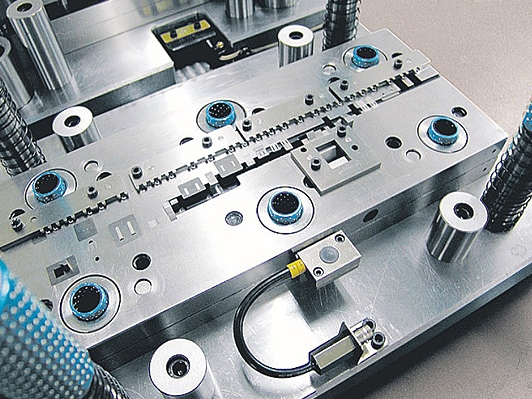Factory of the Future: Digitized Production through the Integration of Metal Embossing and IoT Technology+ View more
Factory of the Future: Digitized Production through the Integration of Metal Embossing and IoT Technology
+ View more
Date:2023-11-28 16:33
In the rapidly evolving landscape of manufacturing, the convergence of traditional metal stamping techniques with state-of-the-art Internet of Things (IoT) technology marks a watershed moment. This fusion promises to redefine industrial practices by integrating the precision and versatility of metal stamping with the connectivity and data-driven insights of IoT.

Metal Stamping: A Pillar of Precision and Adaptability
Metal stamping, an age-old method of shaping metals using pressure and moulds, has long been a linchpin across diverse industries. Renowned for its proficiency in crafting intricate designs and robust products, metal stamping has found applications in automotive, aerospace, electronics, and beyond.
IoT Integration: Transforming Manufacturing Dynamics
The incorporation of IoT technology into metal stamping processes ushers in a new era of digitized production. By embedding sensors and connectivity into stamping equipment, manufacturers gain real-time insights into crucial operational parameters such as pressure, temperature, and machine health. This influx of data allows for predictive maintenance, optimization of production schedules, and remote monitoring, thereby minimizing downtime and enhancing overall efficiency.
Empowering Precision and Quality Assurance
The integration of IoT technology augments precision in metal stamping processes. Real-time monitoring and feedback mechanisms enable swift adjustments, ensuring consistent quality and minimizing defects. Furthermore, this technology empowers manufacturers to maintain stringent quality standards while facilitating the production of intricate and high-quality metal components.

IoT-driven Sustainability and Optimization
IoT integration in metal stamping contributes significantly to sustainability initiatives. By optimizing resource utilization, reducing energy consumption, and enabling predictive maintenance, manufacturers can minimize environmental impact and align with sustainable manufacturing practices.
Challenges and Opportunities in Adoption
While the potential benefits of integrating IoT with metal stamping are vast, challenges such as cybersecurity concerns, data management, and the need for skilled labor to operate and interpret IoT-enabled systems remain significant areas of consideration.
Conclusion: Pioneering the Era of Smart Factories
In conclusion, the fusion of metal stamping with IoT technology heralds the dawn of smart factories. This integration not only elevates precision, quality, and sustainability but also paves the way for predictive maintenance, optimized production, and seamless connectivity, propelling manufacturing into a future characterized by efficiency, adaptability, and innovation.
Share to:
Recommend wonderful blog posts

